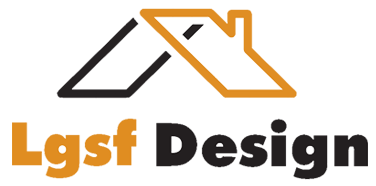Exploring Innovative Techniques in Light Gauge Steel Frame Design

In the realm of modern construction, innovation is key to pushing the boundaries of what's possible. Light gauge steel frame design represents one area where innovation has thrived, revolutionizing the way buildings are constructed. In this blog post, we'll delve into some of the most innovative techniques in light gauge steel frame design, showcasing how they're reshaping the future of construction.
1. Advanced Computer-Aided Design (CAD) Software:
One of the cornerstones of innovation in light gauge steel frame design is the use of advanced CAD software. These powerful tools allow architects and engineers to create highly detailed, precise designs that optimize structural integrity while minimizing material waste. CAD software enables the creation of complex geometries and intricate connections, pushing the boundaries of what's achievable with light gauge steel frames.
2. Building Information Modeling (BIM) Integration:
Building Information Modeling (BIM) has become increasingly integral to the design and construction process, and its integration with light gauge steel frame design is no exception. BIM software enables the creation of 3D models that not only visualize the structure but also simulate its performance under various conditions. By incorporating BIM into the design process, architects and engineers can identify potential issues early on, leading to more efficient and cost-effective construction.
3. Prefabrication and Modular Construction:
Prefabrication and modular construction techniques have gained traction in recent years due to their ability to streamline the construction process and minimize on-site labor requirements. In light gauge steel frame design, prefabrication involves the off-site fabrication of steel components to exact specifications, which are then transported to the construction site for assembly. This approach not only accelerates the construction timeline but also ensures consistency and precision in the final product.
4. High-Performance Coatings and Finishes:
Innovations in coatings and finishes have enhanced the performance and longevity of light gauge steel frames. Advanced coatings provide superior corrosion resistance, extending the lifespan of steel components even in harsh environments. Additionally, specialized finishes can improve thermal performance, acoustic insulation, and fire resistance, making light gauge steel frame buildings safer and more energy-efficient.
5. Sustainable Construction Practices:
Sustainability is a driving force in modern construction, and light gauge steel frame design offers several opportunities to minimize environmental impact. Steel is inherently recyclable, with a significant portion of steel used in construction being sourced from recycled materials. Additionally, the lightweight nature of steel frames reduces transportation emissions and minimizes construction waste. By integrating sustainable practices into light gauge steel frame design, architects and engineers can create buildings that are not only durable and efficient but also environmentally responsible.
Conclusion:
Innovative techniques in light gauge steel frame design are transforming the construction industry, enabling architects and engineers to push the boundaries of creativity and efficiency. From advanced CAD software and BIM integration to prefabrication, high-performance coatings, and sustainable practices, these innovations are reshaping the future of construction. As the industry continues to evolve, we can expect to see even more groundbreaking developments in light gauge steel frame design, driving the creation of safer, more sustainable, and aesthetically striking buildings.

